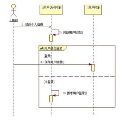Surgical phase recognition (SPR) is a crucial element in the digital transformation of the modern operating theater. While SPR based on video sources is well-established, incorporation of interventional X-ray sequences has not yet been explored. This paper presents Pelphix, a first approach to SPR for X-ray-guided percutaneous pelvic fracture fixation, which models the procedure at four levels of granularity -- corridor, activity, view, and frame value -- simulating the pelvic fracture fixation workflow as a Markov process to provide fully annotated training data. Using added supervision from detection of bony corridors, tools, and anatomy, we learn image representations that are fed into a transformer model to regress surgical phases at the four granularity levels. Our approach demonstrates the feasibility of X-ray-based SPR, achieving an average accuracy of 93.8% on simulated sequences and 67.57% in cadaver across all granularity levels, with up to 88% accuracy for the target corridor in real data. This work constitutes the first step toward SPR for the X-ray domain, establishing an approach to categorizing phases in X-ray-guided surgery, simulating realistic image sequences to enable machine learning model development, and demonstrating that this approach is feasible for the analysis of real procedures. As X-ray-based SPR continues to mature, it will benefit procedures in orthopedic surgery, angiography, and interventional radiology by equipping intelligent surgical systems with situational awareness in the operating room.
翻译:手术阶段识别(SPR)是现代手术室数字化转型中的关键元素。虽然基于视频源的SPR已经得到了很好的发展,但还没有探索基于介入X光序列的应用。本文提出了Pelphix,这是一种针对X光引导下经皮盆骨折固定的SPR方法,将该过程建模为Markov过程并以4个粒度水平--通道、活动、视角和帧值,模拟盆骨固定操作流程并提供全面的注释训练数据。通过在检测骨质通道、工具和解剖结构的基础上增加监督,我们学习了可供输入变压器模型回归手术阶段的图像表示。我们的方法证明了基于X光的SPR的可行性,模拟序列的平均准确率达到93.8%,尸体数据跨所有粒度级别达到67.57%,目标通道的真实数据准确率高达88%。这项工作是朝着X光领域的SPR迈出的第一步,确定了将手术阶段分类为X光引导下的外科手术的方法,模拟现实图像序列以实现机器学习模型开发,证明了这种方法能够适用于真实手术的分析。随着基于X光的SPR的不断发展,它将提高智能手术系统在手术室内的情境意识,为骨科手术、血管造影和介入放射学手术提供帮助。


